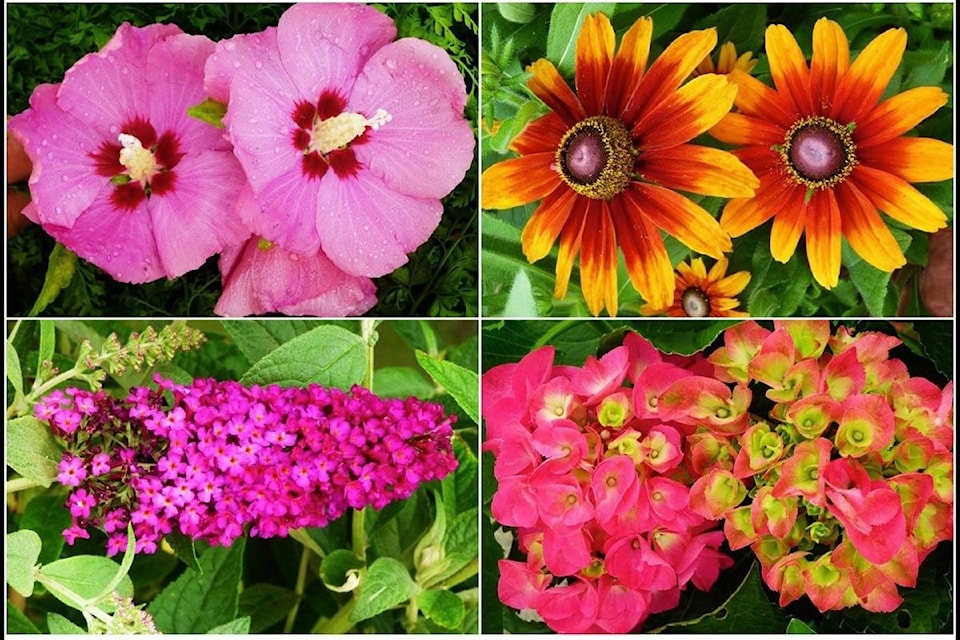It is often during the ‘dog days of summer’ that we don our brightest accessories – be it that tacky Hawaiian shirt that’s languished in the closet all winter, the vintage car with a fresh coat of wax or the swim apparel in every colour of the rainbow.
The same should apply to our gardens, many of which have suffered under the extreme heat and scarce rain, giving them that dreary, somewhat neglected appearance.
It’s not like we don’t care, but some of us get tired of the scorched foliage, faded summer flowers and spent spring perennials.
This is where a trip to your local garden centre can help revive your spirits with all manner of flowering shrubs and seasonal plants in their glorious Kodachrome best.
Hydrangeas are probably the best place to start and given their long season of bloom, often provide months of colour and cut flowers. The cone-shaped flowers of Hydrangea paniculata or ‘PeeGee’ types are quite sun tolerant and open in shades of white to lime green, fading with hints of rose-pink or bronze.
Reasonably compact cultivars include ‘Little Lime’, ‘Lavalamp Flare’ and ‘Little Quick Fire’, while taller varieties such as the new ‘Zinfin Doll’, ‘Limelight’ and ‘Lavalamp Moonrock’ make a showy backdrop to any mixed border.
The Annabelle-type hydrangeas (H. arborescens) are equally sun tolerant with their white to pink blooms, and while there are new compact varieties (‘Wee White’ and ‘Mini Mauvette’), expect the taller varieties like ‘Incrediball’ and ‘Invincibelle Spirit’ to be a bit floppy, despite claims to the contrary.
The mopheads or Hydrangea macrophylla reward us with the brightest colour range of deep pink to red, blue and rich purples, but these will vary depending on the soil pH (with the exception of whites) – leaning towards pinks in alkaline conditions and blues when acidic.
My favourites among these are the Cityline series from Proven Winners due to their compact growth and floriferous nature.
There are many to choose from, including ‘Paris’ (pink to red), ‘Mars’ (variegated blooms), ‘Berlin’, ‘Rio’ (blue to purple) and ‘Venice.’
This species performs best in part sun with even soil moisture, with a full morning or late afternoon exposure being ideal.
Butterfly bush or Buddleia has been vilified lately as a self-seeding invasive shrub, which is certainly true for the old-fashioned B. davidii, but newer introductions are often sterile or hybrids with low fertility, so this isn’t an issue. Foremost among these are the Proven Winner varieties ‘Miss Molly’ (magenta-pink) and ‘Miss Ruby’, both of which mature around 1.5m.
Hardy hibiscus (H. syriacus) is another seasonal favourite with showy double or single blooms from midsummer into early autumn.
At 2.5 to 4m tall, these tend to be large shrubs (with the exception of ‘Lil Kim’) but since they bloom on new wood, some height reduction is possible with harder pruning in April.
The colour range of this species is quite impressive and includes white (‘Red Heart’, ‘Diana’), pink (‘Woodbridge’, ‘Aphrodite’), blue (‘Bluebird’, ‘Marina’) and mauve (‘Purple Pillar’, ‘Violet Satin’), with single blooms often contrasted with a red blotch.
Last but not least are Gloriosa daisies or Rudbeckia hirta, which are Zone 5 hardy, but often difficult to overwinter in coastal gardens due to our wet winters, so choose a spot with perfect drainage.
Again the colour range in quite impressive and includes ‘Cherry Brandy’ (burgundy), ‘Indian Summer’ (golden-yellow), ‘Cappuccino’ (orange and mahogany) and ‘Irish Eyes’ (gold with a green cone), among many others.
So treat yourself to a little seasonal colour because it doesn’t just apply to spring and fall anymore.
Mike Lascelle is a local nursery manager and gardening author (hebe_acer@hotmail.com).
